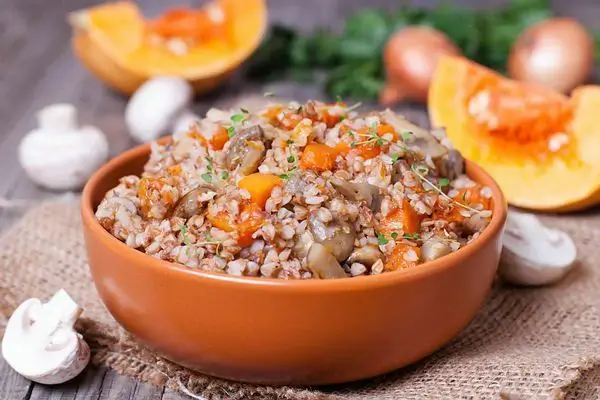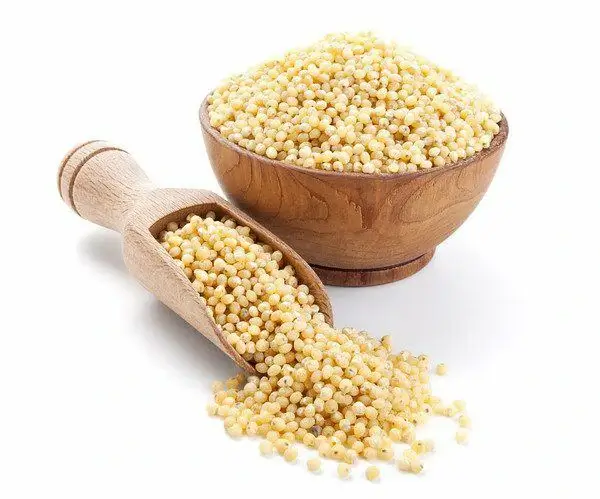Gluten Free Flour, Top 10 Gluten Free Substitute For Flour What is Gluten, Gluten-Free Diet, Why its necessary and what its advantages and disadvantage you will get know all this after reading this article.
What is Gluten?
Gluten is a type of protein found in wheat, barley and rye. Many common staple foods, such as bread, noodles, steamed buns, dumplings, etc., are gluten-containing foods. Gluten is not only found in grains such as wheat, rye, and barley, but also widely used in cheese, margarine, hair conditioner, and mascara.
What is Gluten-Free Diet?
Gluten-free diet is one of many health-preserving diet programs, which was first initiated in the West. A gluten-free diet refers to foods completely free of gluten, and gluten is what people often call wheat bran. A gluten-free diet refers to strictly abstaining from all foods containing gluten, that is, not eating any foods containing wheat Foods containing gluten.
Why Gluten Free Diet?
Gluten-free diet is mainly for some human diseases, such as the treatment of patients with celiac disease. Patients with certain diseases have certain allergies to gluten, so they need to follow a gluten-free diet. However, with the continuous discovery of the times, this diet has slowly spread to the people, and it is used in people’s lives as a new type of diet for weight loss.
First of all, people need to know that the main component of the gluten-free diet is low carbohydrates. The gluten-free diet does have certain benefits for people, but there are also certain disadvantages. Next, I will introduce the gluten-free diet various pros and cons!
What are the advantages of a gluten-free diet?
- it can be used as an effective diet for weight loss. For obese people, this diet can lower the cholesterol content in the body, and it has a very good auxiliary effect on weight loss.
- This diet can also prevent and treat some human diseases to a certain extent, such as alleviating various pains of patients with celiac disease, alleviating symptoms of joint pain, and so on.
What are the disadvantages of a gluten-free diet?
- This diet is very light, and it is difficult for many people to stick to it. In the initial stage of this diet, some people may have certain adverse physical reactions and may not adapt to it for a certain period of time.
- In addition, the cost of this diet is often relatively high. For people with average economic conditions, this diet may cause a burden.
All in all, for most people, maintaining a nutritionally balanced diet is sufficient, and there is no need to stick to a gluten-free diet. A balanced and adequate diet of various nutrients is very important for everyone.
Fortunately, you can easily incorporate many gluten-free alternatives into your diet.
Top 10 Gluten Free Substitute For Flour(wheat flour)
Buckwheat
Buckwheat is a seed mistakenly thought of as a grain with a nutty, earthy flavor.
Since buckwheat is neither a grain nor related to wheat, it is gluten free flour and safe for those with celiac disease and gluten allergies.
Buckwheat is rich in fiber and protein and is also rich in iron, zinc, manganese, magnesium, phosphorus, and copper. It’s also a good source of several B vitamins, such as B6, pantothenic acid, niacin, folic acid, thiamine, and choline.

Buckwheat seeds are a superfood because they are rich in antioxidants like rutin, tannins, and catechins.
Buckwheat is easy to include in your meal plan. It comes from granola, seeds, noodles, and flour.
Cereal can uses as hot or cold cereal. In noodle form, you can use it in soups and stir-fries. You can use buckwheat flour to make muffins, cookies, bread, and other snacks.
Quinoa
Another wheat substitute is quinoa, a pseudocereal, which means it’s a seed that’s prepared and eaten like a grain. Since gluten-free, people with gluten or wheat sensitivities can enjoy it.
Pure quinoa is safe for people with celiac disease and those with non-celiac gluten sensitivity.
Quinoa is a complete protein source as it contains all essential amino acids. Some other important vitamins and minerals in quinoa are manganese, phosphorus, copper, folate, iron, magnesium, and zinc.
Quinoa has a crunchy, nutty flavor that loves by children and adults alike.
It would help to cook quinoa before being eaten as a side dish or breakfast porridge. You can also add cooked quinoa to salads or soups. You can even grind the seeds into quinoa flour.
Millet
Millet has a sweet, nutty flavor and is considered one of the little allergenic grains. It is one of the few grains that alkalize the body, which makes it easy to digest.
These gluten-free, pelleted seeds are rich in magnesium, calcium, manganese, tryptophan, phosphorus, fiber, and several B vitamins. They also have antioxidant capabilities.

You can make breakfast porridge with cooked millet and add your favorite nuts and fruits for healthy toppings. You can also add millet to salads and soups.
Its brown rice-like structure makes it a perfect ingredient for pilafs, casseroles, and most Asian dishes.
Millet flour can also substitute for refined flour in bread, cookie, and muffin recipes.
Amaranth
Amaranth is another popular seed that can add to the list of gluten free flour(grains). It was cultivated by the Aztecs 8,000 years ago and was a staple food of the Aztecs and Mayans.
Amaranth is a protein-rich, high-fiber food that can make your digestive system healthier. It’s also a good source of many essential vitamins, including A, C, E, K, B5, B6, folic acid, niacin, and riboflavin.
In addition, it contains calcium, magnesium, copper, zinc, potassium, and phosphorus.
Plus, it has potent antioxidant, anti-inflammatory, and immune-boosting properties.
Light-bodied, nutty, or peppery, the fuchsia wine is an excellent choice for a healthy snack. Its flour can thicken soups, sauces, stews, and even jellies.
Oatmeal
There’s a reason oats are one of the most popular whole grains in the world.
They are considered safe for gluten allergies and a good substitute for wheat.
Oats are rich in fiber and nutrients like iron, magnesium, potassium, selenium, folic acid, and plant protein. They also contain small amounts of essential fats. Plus, they have potent phytonutrients and antioxidants that are good for your health.
Since some oat brands today contain small amounts of wheat, barley, and rye, you must check labels carefully before purchasing. Oatmeal often serves for breakfast, but you can enjoy it any day.
You can add honey, maple syrup, cinnamon, nutmeg, butter, brown sugar, agave nectar, vanilla, or molasses for added flavor and health benefits.
You can also find oat flour in the market, which has similar nutritional benefits to oats. When cooking with oat flour, remember it needs other flour and starches.
Tapioca flour
Tapioca flour is made from cassava root (yuca or manioc). This gluten-free flour is an alternative to wheat flour. It is made from ground and dried cassava fibrous root.
Tapioca flour is rich in fiber and protein. It also contains vitamins B6, C, and K, manganese, potassium, folate, thiamine, magnesium, copper, niacin, riboflavin, phosphorus, and zinc.
It has a nice, smooth texture and mild flavor, making it versatile in different recipes.
Tapioca is a thickening agent for sauces, gravies, soups, and more. You can also use this and other flours in small amounts in baking. The starch extracted from the cassava root, tapioca, is also a good substitute for wheat.
Coconut Powder
Coconut flour is perfect if you’re looking for a healthy alternative to refined flour for baking.
This flour is excellent for those with celiac disease or gluten sensitivity. This flour is made by grinding fresh coconut meat, then dehydrating and defatting. The result is a fine powder that looks and feels similar to wheat or grain flour.
Coconut flour is rich in fiber, protein, manganese, calcium, selenium, phosphorus, and potassium. It also contains vitamins B6 and C, folate, and niacin.
This flour has anti-inflammatory, antioxidant, antibacterial, and antifungal properties.
You can substitute coconut flour for wheat flour in various recipes—from bread to muffins to cookies. You can also use it to make homemade grain-free pizza.
Almond powder
If you’re baking with wheat flour, one of the best substitutes is almond flour.
Almond powder makes from finely ground almonds, and this flour uses for baking cakes, cookies, muffins, bread, and more. It can also use as bread for frying or baked goods.
Almond flour has all the benefits of a handful of almonds. This flour is gluten-free, low in carbs, high in fiber, and rich in protein.
It contains vitamins and minerals, including iron, riboflavin, magnesium, potassium, calcium, and vitamin E.
You can find this flour in both blanched and natural flours. You can use either of them depending on your needs. However, due to its fatty acid content, it has a shorter shelf life. So, it recommends that you grind almonds in a food processor before using them.
Brown Rice Flour
Brown rice flour is safe for people with celiac disease. It is milled from brown rice, so it has high nutritional value.
This flour is high in fiber and wholesome carbohydrates. It is also rich in protein, iron, and B vitamins. In addition, it is rich in manganese, magnesium, phosphorus, copper, calcium, and potassium.
It has a nutty, heavier flavor than its relative white rice flour. You can use it for baking cakes and cookies. You can also thicken sauces or spread them on fish and other proteins.
Corn
Neither cornmeal nor flour is gluten-free. Cornmeal and cornmeal are both made from dried corn kernels.
Cornmeal and cornmeal are excellent sources of healthy carbohydrates and fiber. They’re also rich in antioxidants like lutein and zeaxanthin, which promote good health, especially for the eyes.
In baking, cornmeal imparts a sweet, grainy flavor to baked goods. The flour can also be made into polenta and porridge and used to make bread.
It’s also great for thickening liquids and sauces.
When buying cornmeal or flour, check labels carefully. Choose organic varieties and avoid GMO corn.
There are many alternatives to wheat and wheat flour, including sorghum, sorghum flour, chickpea flour, soybean flour, hemp flour, chia flour, potato flour, and potato starch flour.


